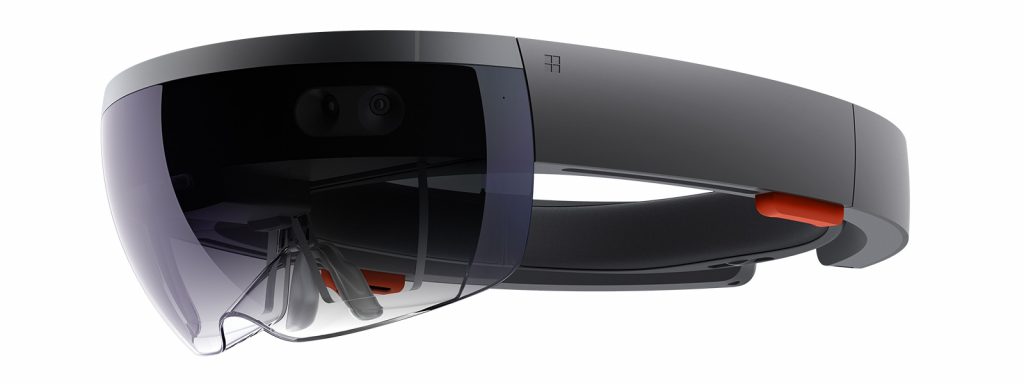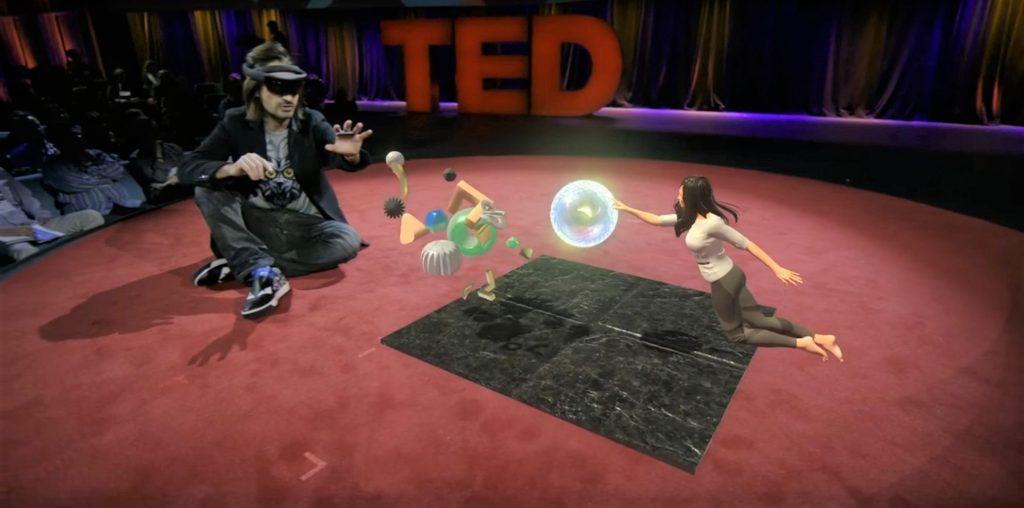Ever since Microsoft first announced HoloLens at the Build 2015 conference, I have been trying to get my hands on the self-contained, holographic computer that allows you to interact with holograms. I wanted to see if it would live up to the hype. Although I have had no luck arranging a demo through Microsoft, I did get to try out HoloLens at the National Research Council in Canada. Someone at the facility just happened to have a HoloLens that they were nice enough to let me use while I was there flying a series of microgravity research flights as a part of my spaceflight training. (The video below gives an example of my training.)
https://youtu.be/TReuv6uCDZA
Let me just say up front that the HoloLens does indeed live up to the hype. Using the HoloLens proved to be an incredible experience. I feel comfortable saying that all of those amazing HoloLens demos that Microsoft provided at conferences such as Build and Ignite were probably real. Even so, there are a few things about HoloLens that really surprised me.
1. A commercial suite is available
 When Microsoft initially released pricing information for HoloLens, it was widely reported that the HoloLens Developer Edition would sell for $3,000. When I began taking a more serious look at HoloLens, however, I discovered that Microsoft also offers a commercial suite for $5,000.
When Microsoft initially released pricing information for HoloLens, it was widely reported that the HoloLens Developer Edition would sell for $3,000. When I began taking a more serious look at HoloLens, however, I discovered that Microsoft also offers a commercial suite for $5,000.
The notion that Microsoft would offer a developer edition and a commercial edition of HoloLens isn’t completely surprising. After all, Microsoft has done that sort of thing in the past for other products. For example, the company offers a developer edition of SQL Server. The thing that really surprised me about the commercial suite, however, is that it includes the HoloLens Developer Edition. In other words, there is no difference between the $3,000 HoloLens and the $5,000 HoloLens, at least not from a hardware standpoint.
The reason for the price difference is that the commercial suite includes software features that are geared toward enterprise use. For example, the commercial edition offers a kiosk mode, the ability to lock the device with a PIN, BitLocker support, and the ability to use VPNs or WiFi networks that require credentials.
2. What you see on YouTube isn’t what you get
One of the sentiments that has been echoed by many of the people who have tried HoloLens has been that the device has a really narrow field of view. For the life of me, I couldn’t understand this one. Microsoft’s initial HoloLens demos didn’t seem to suffer from any field-of-view issues. Likewise, none of the third-party YouTube videos showed what I would consider to be a narrow field of view.
Even so, I can tell you from first-hand experience that HoloLens does indeed have a narrow field of view. In my opinion, the horizontal field of view is quite good, but the vertical field of view could definitely be better. However, there is a reason why the HoloLens demos on YouTube look so different from what you actually experience when actually using the device.
HoloLens is capable of recording mixed-reality captures. All you have to do is say “Hey, Cortana, start recording,” and HoloLens will record a video that mixes what you see in real life with the holograms that are being generated by HoloLens. The output is sent to an MPEG-4 file with a resolution of 1408 x 792. According to PC World, the maximum per-eye HoloLens resolution is 720p (1268 x 720), with resolutions as low as 360p (634 x 360) being supported. In other words, videos are output at a higher resolution than what the HoloLens can actually display.
3. Creating shared experiences tougher than I thought
When I saw HoloLens demoed for the first time at the Build conference, I assumed that there must have been a mechanism for networking multiple HoloLens devices. That’s because multiple HoloLens devices were being used simultaneously, and a common set of holograms were shown on each device, although each device had its own prospective.
In retrospect, I was only partially correct. You can indeed create an experience that is shared across multiple devices, but doing so requires a bit more than just the HoloLens devices. Sharing a holographic experience requires network connectivity, as well as a sharing service that runs on a backend computer and provides a common point of reference for the devices. Microsoft refers to this as an anchor. Microsoft provides a tutorial on how to accomplish this here.
4. Backend servers make up for lack of processing power
Some of the HoloLens demos that Microsoft has given have been nothing short of mind blowing. Microsoft’s Alex Kipman gave one such demo during a recent Ted talk. During this demo, Kipman walked around in immersive, fantasy environments. These environments were visually stunning, and even included animations. You can see a screen capture from the YouTube video below.

In retrospect, HoloLens may have gotten a little bit of help with producing some of the more complex holograms shown in some of the Microsoft demos. Remember, HoloLens is a self-contained Windows PC. As such, it includes a built-in CPU and GPU, and the device has its own memory and storage. The fact that HoloLens relies on its own computing power (as opposed to being tethered to a PC), means that there are limits to what it can do. However, according to some sources, HoloLens can get some outside help.
In all fairness, I have no information on whether the holograms shown in the previously mentioned video were generated solely by HoloLens or not. Microsoft does not say one way or the other. Given the complexity of the holograms shown in the video, it seems likely that a backend server may have helped with rendering the hologram.
According to MSPowerUser.com, a Microsoft spokesman revealed at an event that “when you want to project a complex scene which HoloLens is not capable of rendering, you use a server for processing and push it to the HoloLens.”
5. Competing devices are available
One last thing that I learned about HoloLens is that, surprisingly, it is not the only game in town. There are other companies that have produced holographic, augmented reality devices. One such product is Meta 2. Another option is the ODG 4K augmented reality glasses. If this video is real, then the glasses are sure to be amazing.
New frontier
As it stands now, Microsoft HoloLens and competing technologies are working at the edge of what is technologically possible. In its current form, HoloLens is a little bit glitchy (but not terrible), and it does indeed have a limited field of view, at least in the vertical space. Even so, HoloLens is awesome. As time goes on, I am sure that Microsoft will iron out any kinks and I wouldn’t be a bit surprised to see a 2.0 version with a wider field of view. After trying out the HoloLens for myself, I am very excited for the device’s future.



